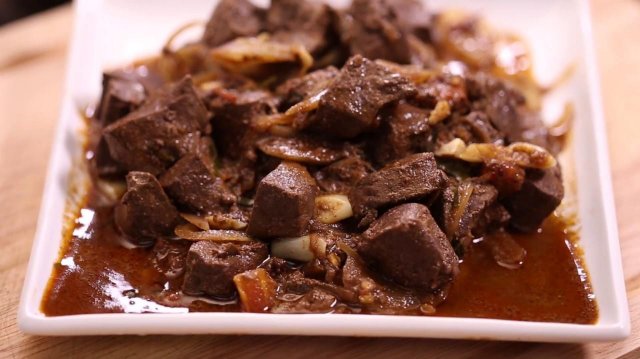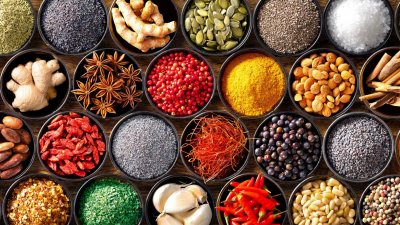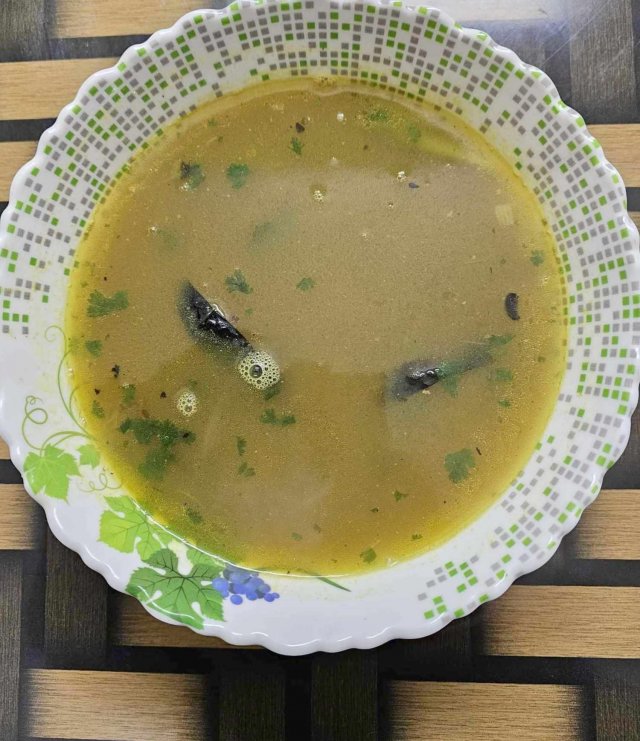If vitamin D decreases, you will understand that in 10 symptoms
Vitamin D is called the sunshine vitamin. Because the body makes it from cholesterol when the skin is exposed to sunlight. If the body does not get enough vitamin D from sunlight or food, various symptoms appear. Vitamin D deficiency affects bone density. Its deficiency can lead to osteoporosis and bone fractures.
What causes vitamin D deficiency?
If you don't sunbathe at all or always use sunscreen, you can suffer from vitamin D deficiency. Besides, many people cannot eat milk and milk products due to suffering from milk allergy. They may be deficient in this vitamin. Even if you always eat vegetarian food, there is a risk of vitamin D deficiency.
How to understand if vitamin D is reduced?
Vitamin D is essential for strong bones. Because it helps the body use calcium from food. Vitamin D deficiency can cause rickets. It is a disease in which the bone tissue does not mineralize properly, which is responsible for soft bones and bone deformities. Find out which symptoms you will understand if you are suffering from a deficiency of this vitamin.
1. Frequent illness or infection
One of the most important roles of vitamin D is to support immune health, which helps you fight off viruses and bacteria. Vitamin D directly interacts with cells that work to fight infection. If you get sick often, especially colds or the flu, low levels of vitamin D may be the cause.
2. Feeling tired Feeling
tired can be caused by a number of reasons, one of which may be a vitamin D deficiency. Visible factors such as stress, depression and insomnia are associated with this.
3. Bone and Back Pain
Bone and lower back pain can be a sign of insufficient vitamin D levels. Vitamin D helps maintain bone health by improving the body's absorption of calcium.
4. Depression
Vitamin D deficiency is associated with depression. One of the many causes of depression can be insufficient levels of vitamin D.
5. Delayed wound healing
Slow wound healing after surgery or trauma can be a sign of vitamin D deficiency. Vitamin D increases the production of compounds that are important for the formation of new skin as part of the wound healing process. Vitamin D's role in controlling inflammation and fighting infection may also be important for proper healing.
6. Bone Loss
Vitamin D plays an important role in calcium absorption and bone metabolism. This is important because taking vitamin D and calcium at the same time helps the body absorb it more. Loss of bone density means that bones have lost calcium and other minerals. This puts older adults, especially women, at risk of fracture.
7. Hair Loss
Many foods and nutrients can affect hair health. A lack of vitamin D can cause excessive hair loss.
8. Muscle Pain
Muscle pain can have many causes. A possible cause could be vitamin D deficiency. One study found that 71 percent of people with chronic pain had low levels of vitamin D.
9. Weight gain
Obesity can be caused by vitamin D deficiency. A study in adults found a link between low vitamin D and increased weight.
10. Anxiety
Vitamin D deficiency is associated with anxiety disorders. Levels of calcidiol, a form of vitamin D, were lower in people with anxiety as well as those with depression, a study suggests.


Our immune system stumbles quite a bit during winter. Cold weather increases our risk of getting sick. Problems like cold, cough and sore throat do not want to leave behind. To prevent these it is essential to include immune boosting foods and drinks in the diet. You can drink orange tea to stay healthy in winter. This tea with its wonderful aroma and vibrant color has several health benefits.
 Orange tea is unique in its nutritional value. Photo-Collected
Orange tea is unique in its nutritional value. Photo-Collected
Why eat orange tea?
Orange tea is a very healthy drink. The main ingredient of this tea is orange which is a great source of vitamin C. This vitamin is very important for boosting our immune system. According to the Food and Drug Association (FDA), a small to medium-sized orange contains about 53.2 milligrams of the vitamin. Sipping this tea will reduce the tendency to fall ill suddenly. It is mixed with honey which has antibacterial properties.
How to make orange tea?
Cut an orange in half. Scoop out the insides with a spoon. Be careful to keep the peel intact. Poke several holes in the shell with a toothpick. Place it on top of the glass you are going to pour the tea into. Spread the tea leaves over the peel. Now take 1 cup of water in a pan. Add the peeled orange pulp to the water. Boil it well and pour it over the peel. The tea will fall into the cup drop by drop. When the cup is full, mix it with honey and drink it.
High level of iron will be found in these 8 foods
Iron is an essential mineral for our body that performs several important functions. Iron's main function is to carry oxygen throughout the body as part of red blood cells. The amount of iron the body absorbs is based in part on how much you store. Iron deficiency can cause anemia and symptoms such as fatigue. Find out which foods will provide enough iron.
- You will get a lot of iron from spinach. 100 grams of spinach can meet up to 15 percent of the daily iron requirement. This vegetable is also a good source of antioxidants.
- Another good source of iron is beef liver. 100 grams of beef liver provides 6.5 mg of iron, which meets 36 percent of the daily requirement. Besides, cow liver is a source of copper, selenium and various vitamins and minerals.
- You can get enough iron from beef. Apart from iron, this meat is rich in B vitamins, zinc, selenium and high quality protein.
- You can eat sweet pumpkin seeds regularly to get iron. Pumpkin seeds meet 14 percent of the daily requirement per 1 ounce serving. They are good sources of several other nutrients.
- Broccoli is a good source of vitamin C, K and folate along with high levels of iron. It also helps reduce the risk of cancer.
- Another excellent source of iron is dark chocolate. One piece of dark chocolate can meet 19 percent of daily needs. Apart from iron, chocolate is a source of many minerals and prebiotic fiber.
- Tuna fish is a good source of iron. Canned tuna can meet 8 percent of daily iron needs. Tuna fish is also a good source of other important nutrients including omega-3 fatty acids, vitamins and minerals.
- 100 grams of olives contain 3.3 mg of iron. It can meet 18 percent of our body's daily iron requirement.
Different types of spices are bought in bulk at once and stored in jars. But spices lose their aroma and taste if they are not stored properly. Know some tricks to maintain the freshness of spices for a long time.
- Keep masala jars away from heat, moisture and direct sunlight. Store them in a cool and dark place. Because the smell and color of spices are lost on exposure to light and heat.
- It is important to use an airtight container to protect the spices from wind and moisture. Spices are preserved in glass or metal containers with tight-fitting lids.
- Buy whole masala instead of powdered masala. Grind as needed. If you want to buy powdered masala, buy in small quantities.
- Moisture can spoil the freshness of spices. Store spices in a dry environment, avoiding storage near stove, dishwasher or any moist place.
- Clearly write the name of the spice and the date of purchase on the jar. You will know when the masala is old.
Rich in vegetable protein, pulses not only keep us healthy, but also bring perfection in taste. Many people cannot eat rice without thin pulses. Learn the easy recipe to cook thin dal with perfect taste.
Wash a cup of lentils well. Soak in water for 15 to 20 minutes. Then drain the water and put it in the pot where you will cook it. Add 5 cups of water. Add less than a teaspoon of turmeric powder, salt to taste, green chilli flakes, 3 cloves of garlic and 2 onion slices. Cook on medium flame. When the dal is cooked, mix it with water. Simmer for another two minutes.
Now it's Bagar's turn. For this, heat oil in a pan and fry garlic cloves and two dry chillies. When the color of the garlic changes, stir the dal into the pot. Chop coriander leaves. Take it down with a shake.
Tips
- Care must be taken while applying turmeric powder to the dal. If too much falls, the dal emits a turmeric smell, which spoils the taste.
- The taste of ripe tomatoes is excellent.
- Cover the dal as soon as it is cooked and do not keep it in the oven for too long.
- You can cook several types of pulses together to increase the taste.
Onion oil is very beneficial for hair. It contains high levels of sulphur, which helps to increase collagen production and strengthen hair roots. This oil helps to moisturize the scalp and reduce dandruff. It also fights fungus and bacteria and helps promote hair growth and reduce hair loss.
What does history say?
Onion oil has been used for centuries as a natural remedy for various ailments. In ancient India and Egypt, onion oil was used to treat headaches, colds and respiratory ailments. In the Middle Ages, onion oil was used to treat baldness and joint pain. In more modern times, onion oil has been used to treat various skin problems such as eczema, psoriasis and acne. It has also been used to reduce inflammation and improve circulation. This oil is believed to have antibacterial and antifungal properties, which may help protect against infection.
Benefits of using Onion Oil
Onion juice is rich in antioxidants, which specifically work to increase the performance of certain enzymes that help prevent hair loss. It can accelerate hair growth, as well as promote hair regeneration. Baldness can be prevented by regular application of onion oil.
Sulfur in onion oil helps prevent hair breakage, split ends and thinning. Other nutrients in onions stop hair from oxidizing. Onion oil keeps the pH of the hair at a normal level and prevents premature graying. Onion juice also provides essential nutrients to the hair and the sulfur present in it improves the health of hair follicles. Onion oil nourishes the scalp, increases blood flow and promotes the growth of thick and strong hair.
If you want to grow long hair, onion oil can help. Any carrier oil such as coconut or olive oil can be mixed with onion oil. Use onion oil as a conditioner to nourish the scalp before shampooing. It protects the hair from dryness and acts as a natural conditioner.
How to use onion oil?
Grind two onions completely. A total of 50 grams of onion batter will be required. Extract onion juice. Mix onion juice with coconut oil and boil it well. Now strain it and cool it and rub it on the head. Wash off with shampoo after 30 minutes.


















No comments:
Post a Comment